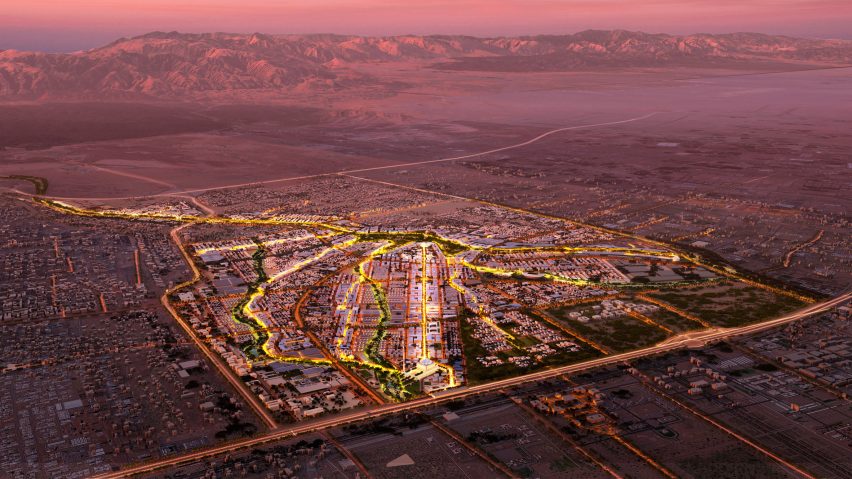
SOM plans city to accommodate Muscat's growing population
Nineteen neighbourhoods constructed with local materials will define Sultan Haitham City, a metropolis for 100,000 residents that London studio Skidmore, Owings & Merrill is designing in Oman.
Skidmore, Owings & Merrill (SOM) is developing the city to accommodate the growing population of locals, expats and tourists living in and visiting the capital Muscat.
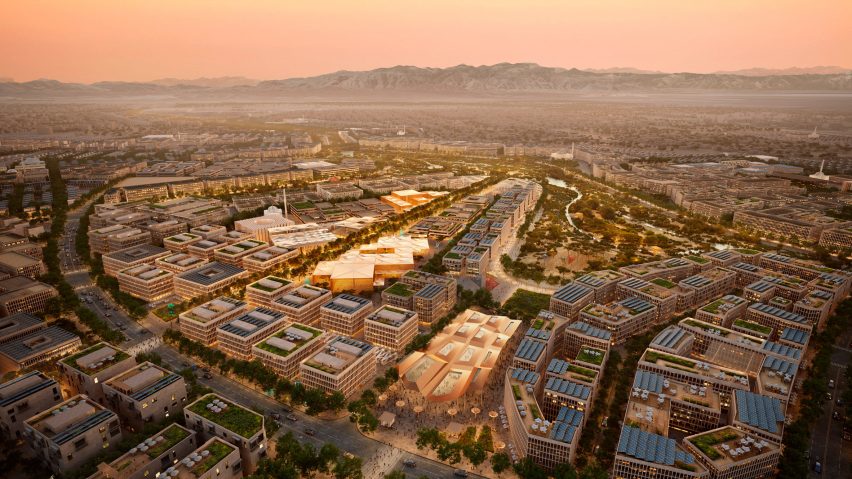
Sultan Haitham City will comprise 19 neighbourhoods over 1,480 hectares of undeveloped land in Al Seeb, a suburb of greater Muscat.
It will introduce public spaces and more than 20,000 new homes while tying in with a new mass transit system that is set to improve connectivity along the country's coastline.
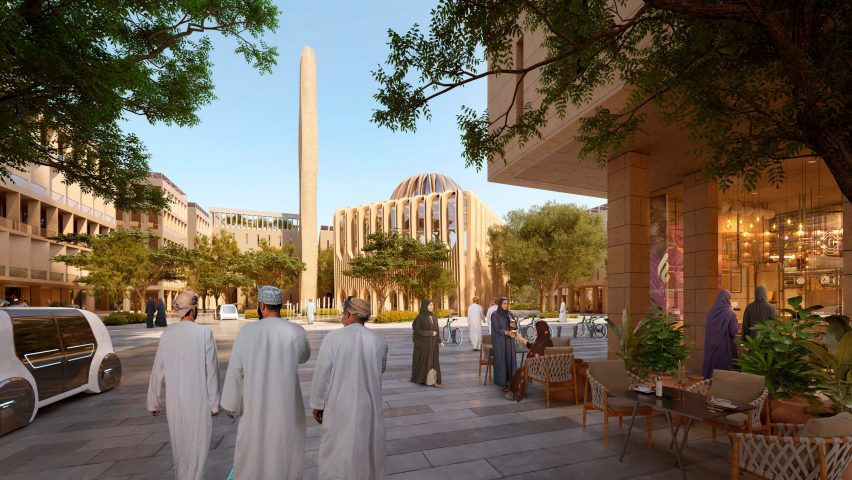
"Sultan Haitham City is designed to enhance the existing district of Al Seeb," SOM's senior associate principal Bernhard Rettig told Dezeen.
"It helps to provide existing residents with new social amenities and significant public space whilst also providing new residences for Oman's growing population."
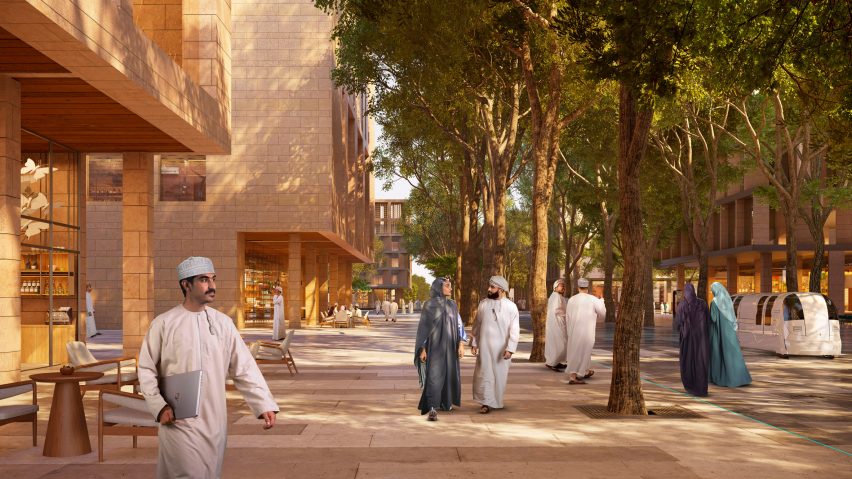
SOM was commissioned for Sultan Haitham City by Oman's Ministry of Housing as part of Oman Vision 2040, a vision aimed at keeping "pace with regional and global changes".
According to Rettig, key elements of the design brief included recognising Oman's "cultural and architectural heritage", while designing contemporary built forms for the city.
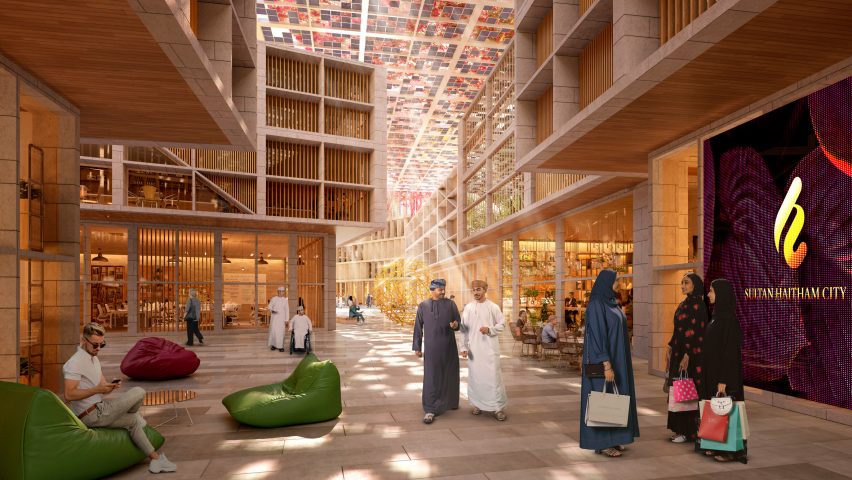
To achieve this, SOM is prioritising the use of local and natural materials for the project, all with a neutral colour palette, to blend in with Oman's architectural heritage.
Another driver for Sultan Haitham City is to ensure the city is resilient to climate change, in light of the increasing strength and frequency of seasonal flood events in the region.
The masterplan involves transforming a 7.5-kilometre-long dry river, or wadi, into a public green park that can hold water in severe flood events.
"Our urban planning team recognised the natural water flows on the site presented a very serious risk of flooding but could also form an opportunity to harness and capture water, the region's most precious resource," said Rettig.
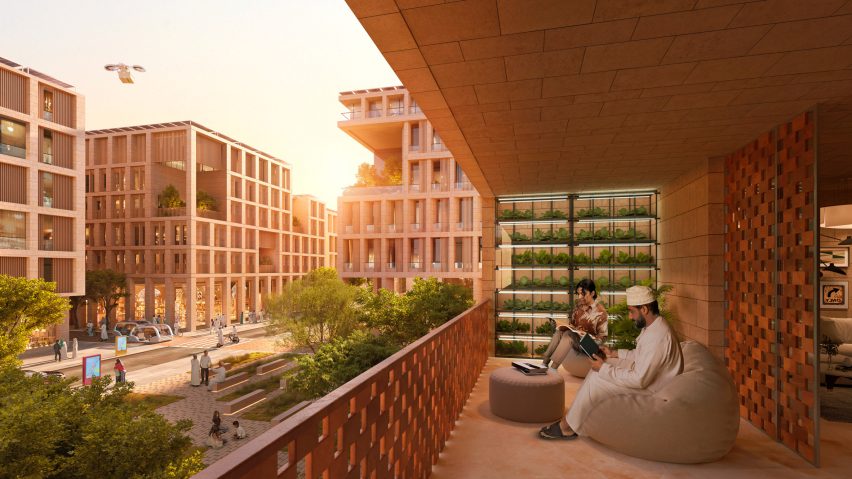
According to SOM, Sultan Haitham City is also being designed as Oman's "first-ever smart city". However, Rettig clarified that this does not mean making use of technologies that are yet to emerge.
"We often think of smart cities as distant visions of the future incorporating technologies that have yet to be invented or fully realised," he said. "However, Sultan Haitham City is a smart city with technologies and sustainable strategies that are deployable today."
Among its smart-city features will be "advanced traffic management systems" that rely on real-time traffic data from cameras and speed sensors to improve congestion and efficiency of public transportation.
Sultan Haitham City is also being designed to safely accommodate e-bikes and e-scooters to reduce car dependency.
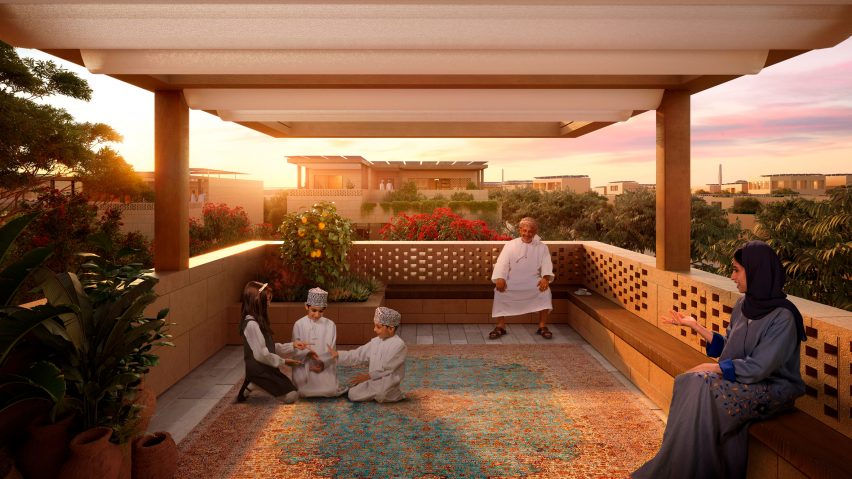
"By rejecting the typical car-centric way in which cities in the Middle East are often designed and, instead, prioritising sustainable modes of transportation, the new city will help to promote less dependency on cars and more walking," said Rettig.
Passive design strategies will also be employed throughout the city, with details such as arranging streets and plazas to optimise shading and maximise natural cooling breezes, alongside renewable energy technologies and solar power.
SOM, an international architecture studio founded in 1936, is currently also developing Alárò City, an extension to Lagos aimed at creating "tens of thousands of jobs", and a new capital for Egypt to relieve congestion in rapidly growing Cairo.
Another recent proposal for an upcoming city is California Forever, a controversial proposal led by Silicon Valley investors that could transform over 50,000 acres of farmland in Solano county.
The visuals are by ATCHAIN courtesy of SOM.
Project credits:
Architect: SOM
Engineer: Meinhardt Group
Landscape: MT Planners
Consultant: EIDC Oman